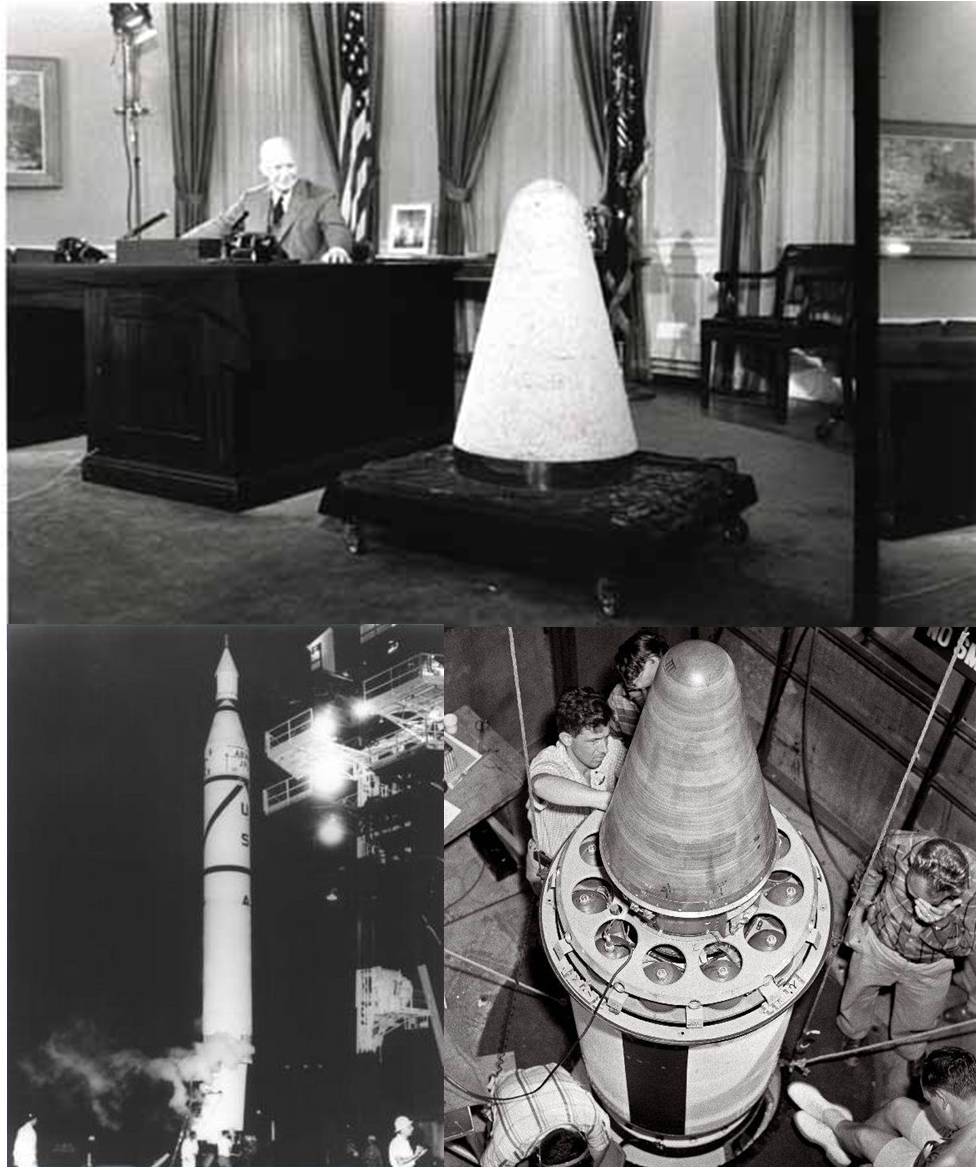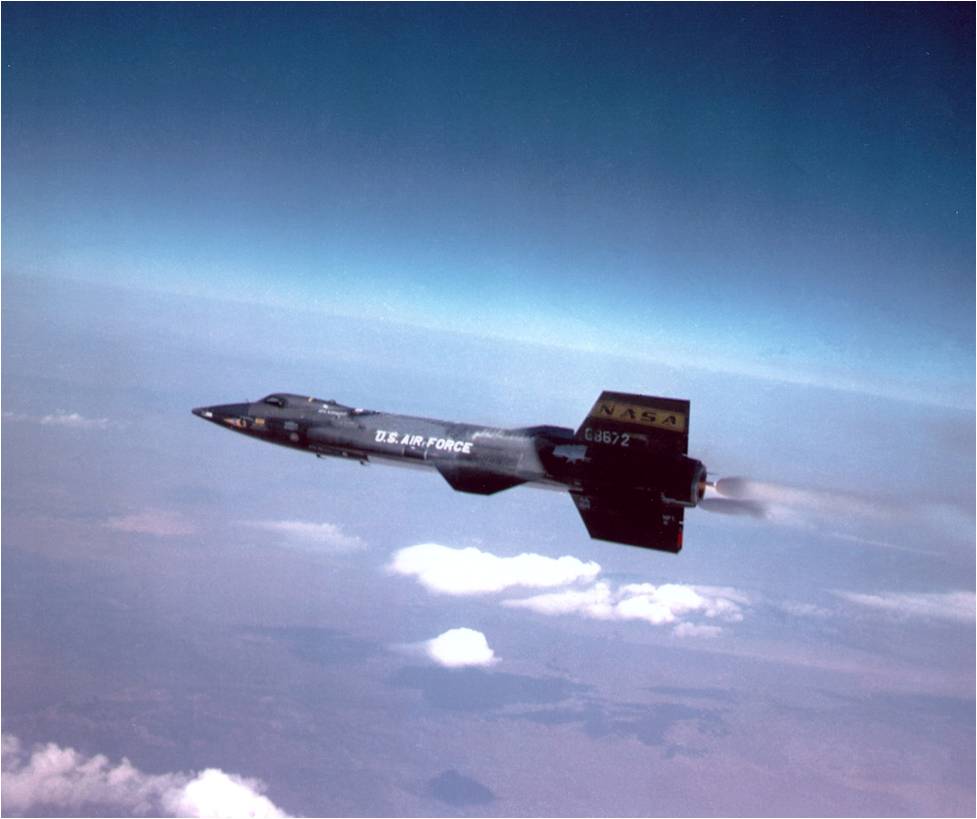
Fifty-seven years ago this month, the USAF/Boeing B-29 Superfortress strategic bomber was officially retired from the active inventory of the United States Air Force. The famed World War II-era aircraft had a service life of less than a dozen years.

Fifty-six years ago this month, the USAF/Bell X-2 Starbuster experimental flight research aircraft made its initial powered flight from Edwards Air Force Base, California. Legendary test pilot USAF Lt. Col. Frank K. “Pete” Everest was at the controls of the rocket-powered, swept-wing X-aircraft.
Posted on November 15, 2011 by
skyhookJ. Terry White brought his in-demand Aerodynamics For Engineers (AFE) short course to Raytheon Missile Systems (RMS) in Tucson, AZ. The training was held 7-10 November 2011 and marks the company’s premier visit to RMS, a global leader in design, development and production of missile systems for U.S. and allied forces.
White Eagle Aerospace’s AFE course is fast becoming one of the most requested training programs in its current curriculuum. The course material is directly applicable to a wide variety of aerospace-related professions and serves as an ideal foundation for advanced studies.

Class Photo
Aerodynamics For Engineers
Raytheon Missile Systems • Tucson, AZ
7 – 10 November 2011
The entire team at White Eagle Aerospace would like to extend a warm thank you to each student in attendance and tremendous appreciation to the following key individuals whose assistance has been invaluable: Erica Lefcourt, Renee Richards and Tim Morrill.

Fifty-four years ago this month, the first ablative nose cone to survive entry into the Earth’s atmosphere was formally presented to the American public. President Dwight D. Eisenhower displayed the recovered nose cone during a national television broadcast from the Oval Office.
An object making a hypersonic entry into the the Earth’s atmosphere from space possesses a great deal of kinetic energy. This energy of motion is transformed to thermal energy as aerodynamic drag slows the vehicle during atmospheric flight. A portion of the entry thermal energy is absorbed by the vehicle structure in a process referred to as aerodynamic heating. This heat transfer process causes the temperature of the external surface of the vehicle to significantly increase.
From a vehicle survivability standpoint, three parameters are key; (1) maximum heat transfer rate, (2) maximum surface temperature and (3) total thermal energy absorbed by the vehicle during entry. The concern is that there is enough kinetic energy in the entry flight domain to vaporize any known material if that energy is completely absorbed by the vehicle.
One has only to look into the heavens at night to become convinced of the ferocity of the entry environment. The streaks of white, yellow, green, blue, or red light that dramatically flash into and out of existence are associated with the vaporization of meteors transiting the atmosphere. Few meteors have enough original mass to allow a minor portion thereof to reach the ground. Those that do are referred to as meteorites.
The problem of surviving atmospheric entry was a major research topic in the 1950’s. Attention focused on protecting the nuclear warhead carried by the reentry vehicle of an Intercontinental Ballistic Missile (ICBM). A pair of research scientists at the NACA Ames Research Center in California, H. Julian Allen and Alfred J. Eggers, are credited with solving the problem. The key was to hemispherically-blunt or round the nose of a reentry vehicle.
A blunted forebody disposes a detached, hyperbolic-shaped shock wave which slows the post-shock flow to subsonic speeds in the stagnation region. A byproduct of this flow deceleration is a significant increase in post-shock static pressure and temperature. While this dramatically increases vehicle wave drag, most of the high temperature air passes around the vehicle and thus never physically comes in contact with it. The result is that only a small fraction of the overall thermal energy of the freestream flow is convected to the vehicle surface.
In contrast to the above, a sharp-nosed vehicle nose disposes an attached, highly-swept shock wave. This flow topology results in a large fraction of the overall thermal energy being convected to the vehicle surface. The is because the degree of post-shock flow slowing in such a situation is small. Indeed, the post-shock flow has a high supersonic Mach number. Now, due to the “no-slip” condition caused by fluid viscosity, the flow velocity at the vehicle surface is zero. Thus, the bulk of the flow deceleration has to occur within the boundary layer. The huge shearing stresses and temperature gradients that result generate extreme heat flux rates at the vehicle surface.
On Thursday, 08 August 1957, a Jupiter-C launch vehicle carrying a one-third scale version of a Jupiter IRBM nose was launched from LC-6 at Cape Canaveral, Florida. The nose cone traveled 1,168 nautical miles, reaching nearly 9,000 mph and an altitude of 260 nautical miles in the process. During reentry an ablative heat shield was used to protect the nose cone from the aerodynamic heating environment. The vehicle parachuted into the Atlantic Ocean and was recovered by Navy swimmers within three hours of launch.
On Thursday, 07 November 1957, President Dwight D. Eisenhower displayed the recovered Jupiter IRBM scaled nose cone in a nationally televised broadcast from the Oval Office. The excellent condition of the recovered vehicle was a stark testament to the effectiveness of a blunted, ablative nose cone to weather the rigors of reentry heating. This historic breakthrough would forever change the science of atmospheric entry. Indeed, it would ultimately make possible successful entry of Apollo astronauts returning from the Moon at 25,000 mph.
Today, one can view the recovered Jupiter IRBM subscale nose cone at the Smithsonian’s National Air and Space Museum in Washington, DC. Specifically, it is on public display in the Space Race Exhibition at the National Mall Building.

Forty-four years ago this month, the No. 3 USAF/North American X-15 research aircraft broke-up during a steep dive from an apogee of 266,000 feet. The pilot, USAF Major Michael J. Adams, died when his aircraft was torn apart by aerodynamic forces as it passed through 65,000 feet at more than 2,500 mph.
The hypersonic X-15 was arguably the most productive X-Plane of all time. Between 1959 and 1968, a trio of X-15 aircraft were flown by a dozen pilots for a total of 199 official flight research missions. Along the way, the fabled X-15 established manned aircraft records for speed (4,534 mph; Mach 6.72) and altitude (354,200 feet).
The X-15 was a rocket, aircraft and spacecraft all rolled into one. Burning anhydrous ammonia and liquid oxygen, its XLR-99 rocket engine generated 57,000 lbs of sea level thrust. Reaction controls were required for flight in vacuum. Each flight also required careful management of aircraft energy state to ensure a successful, one attempt only, unpowered landing.
On Wednesday, 15 November 1967, the No. 3 X-15 (S/N 56-6672) made the 191st flight of the X-15 Program. In the cockpit was USAF Major Michael J. Adams making his 7th flight in the X-15. He had been flying the aircraft since October of 1966. Like all X-15 pilots, he was a skilled, accomplished test pilot used to dealing with the demands and high risk of flight research work.
X-15 Ship No. 3 was launched from its B-52B (S/N 52-0008) mothership over Nevada’s Delamar Dry Lake at 18:30 UTC. As the X-15 fell away from the launch aircraft at Mach 0.82 and 45,000 feet, Adams fired the XLR-99 and started uphill along a trajectory that was supposed to top-out around 250,000 feet. If all went well, Adams would land on Rogers Dry Lake at Edwards Air Force Base in California roughly 10 minutes later.
Around 85,000 on the way upstairs, Adams became distracted when an electrical disturbance from an onboard flight experiment adversely affected the X-15’s flight control system, flight computer and inertial reference system. As a result, data on several key cockpit displays became corrupted. Though with some difficulty, Adams pressed-on with the flight which peaked-out around 266,000 feet approximately three (3) minutes from launch.
As a result of degraded flight systems and perhaps disoriented by vertigo, Mike Adams soon discovered that his aircraft was veering from the intended heading. He indicated to the control room at Edwards that his steed was not controlling correctly. Passing through 230,000 feet, Adams cryptically radioed that he was in a Mach 5 spin. Mission control was stunned. There was nothing in the X-15 flight manual that even addressed such a possibility.
Incredibly, Mike Adams somehow managed to recover from his hypersonic spin as the X-15 passed through 118,000 feet. However, the aircraft was inverted and in a 45-degree dive at Mach 4.7. Still, Adams may very well have recovered from this precarious flight state but for the appearance of another flight system problem just as he recovered the X-15 from its horrific spin.
X-15 Ship No. 3 was configured with a Minneapolis-Honeywell adaptive flight control system (AFCS). Known as the MH-96, the AFCS was supposed to help the pilot control the X-15 during high performance flight. Unfortunately, the unit entered a limit-cycle oscillation just after spin recovery and failed to change gains as the dynamic pressure rapidly increased during Ship No. 3’s final descent. This anomaly saturated the X-15 flight control system and effectively overrode manual inputs from the pilot.
The limit-cycle oscillation drove the X-15’s pitch rate to intolerably-high values in the face of rapidly increasing dynamic pressure. Passing through 65,000 feet at better than 2,500 mph (Mach 3.9), Ship No. 3 came apart northeast of Johannesburg, California. The main wreckage impacted just northwest of Cuddeback Dry Lake. Mike Adams had made his final flight.
For his flight to 266,000 feet, USAF Major Michael J. Adams was posthumously awarded Astronaut Wings by the United States Air Force. His name was included on the roll of the Astronaut Memorial at Kennedy Space Center (KSC) in 1991. Finally, on Saturday, 08 May 2004, a small memorial was erected to the memory of Major Adams near his X-15 crash site situated roughly 39 miles northeast of Edwards Air Force Base.





